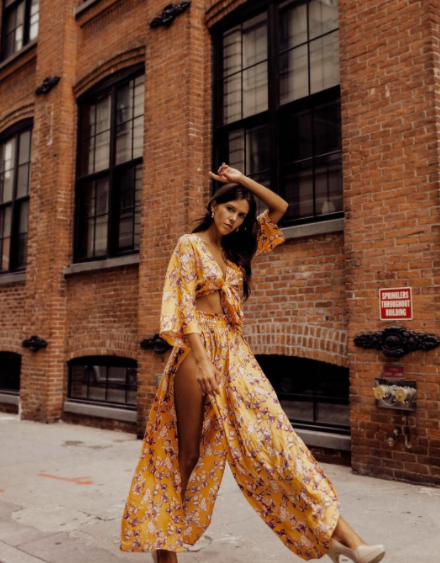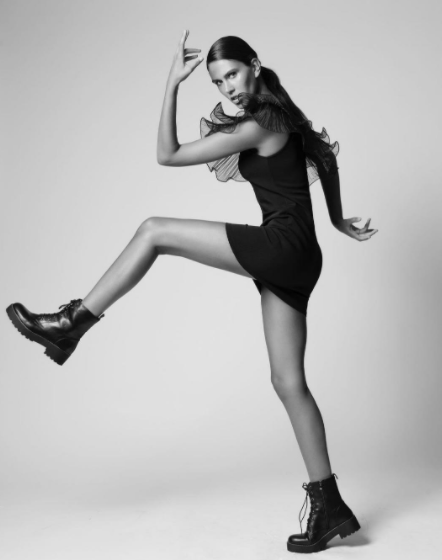The Truth Behind ‘Picture-Perfect’ Modelling

March 10, 2021
“I was seventeen. I remember walking into the room full of people and the designer gave me this bodysuit to put on,” said Sarah Stevens, a model in the fashion industry, during her interview with Vogue. “There was no changing room, she made me just… get naked. She took one look at my body and kind of just snickered and laughed and said, ‘that’s not gonna work.’”
This experience is not uncommon in the fashion and modeling industry.
Inappropriate behavior exhibited by designers, photographers, and agents plagues the minds and bodies of models, but they are not the only ones who suffer from judgement due to unrealistic beauty standards. Teenage girls are constantly exposed to an unattainable level of beauty on social media and news outlets. It’s unavoidable.
Victoria’s Secret’s 2014 ‘The Perfect Body’ Campaign, which featured eight models with little to no diversity in body type or race, suggested that there was a certain height, complexion, and physique that we should associate with perfection. Anything that didn’t fit this standard wasn’t considered beautiful.
Since then, society has made significant strides towards accepting and celebrating the diversity of beauty, but the past’s effects on our psyche are hard to shake.
A few days ago, I spoke with Kristina Renaud, a fashion model who has experience in
freelance modeling, runway modeling, and has just been signed to Dynasty Models.
She spoke passionately about breaking down the stigma around the term “perfect.”
“When we contextualize perfection in the way we use it today, it’s very negative,” Kristina said. ”But I think in its original form, perfection is found in our individuality.”
Kristina’s belief is that, similar to happiness, perfection is a state of mind. It is not something that can be given nor taken away from you. It comes from within. Unfortunately, for some, this revelation won’t change deep rooted tendencies of toxic comparison.
A study conducted by Renne Engeln Ph.D. suggests subconscious comparison exists in the female mind even when subjects are aware of image editing softwares like Photoshop and Facetune.
“The majority of women knew the beauty standards… were unrealistic,” Renne says about the study. “The sad news is… this critical stance didn’t stop them from comparing themselves.”
The very models we admire hold themselves to these painful standards, as well.
“What I received for many years was that my body was not right and it’s almost impossible to erase that,” says model Myla Dalbesio in her interview with Vogue on body image.
How can we reach the beauty standards set by organizations and the media when the models themselves can’t seem to even reach them? The simple answer is: we can’t. At least not until we come together to reevaluate what society has taught us is ‘perfect.’ I agree with Kristina. At its core, both the modeling and fashion industries are built on love and compassion, not only for oneself, but those around us.
We must re-discover this key mindset and embed this compassion into our society. It’s not surprising that amidst the corruption of the fashion and modeling industry, there are still thousands of women who long to be a part of it.
Kristina was 13 when she started modeling and cites her experiences in the industry as a building block for her individuality and self-confidence, supporting the general consensus that this industry helps people discover their sense of self.
“We’re all artists coming together to fulfill a vision, and that is the most beautiful thing about modeling.”
Pingree’s very own aspiring Fashion Business Executive Maddy Signore is hopeful for the future. In speaking with her, she expressed her love for the fashion and modelling industry. “At its heart, there is something magical about this industry and any way I can contribute to that is incredible.”
It is our job as the new generation to break down this stigma surrounding perfection in fashion and models – and to celebrate individuality.
So what’s next for the modeling industry? From what I can see, the future looks bright.
We as a generation have seen the most diversity in model appearance, model size, and representation of ethnic backgrounds.
We have a long way to go, but I believe there is still hope for the future of these industries to do what they were meant to do: celebrate true perfection across the world.


Eric Stacey • May 21, 2021 at 12:41 pm
Awesome, powerful article, Brooke. Really well researched and well written. Thank you!